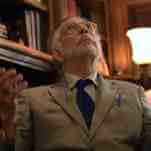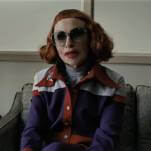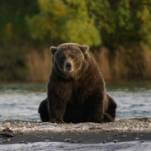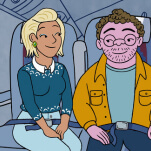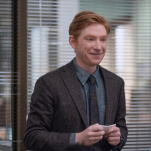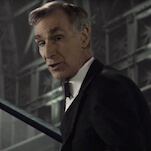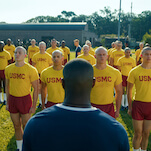The Secret Of NIMH leaves basically every kid who sees it with a lingering dread
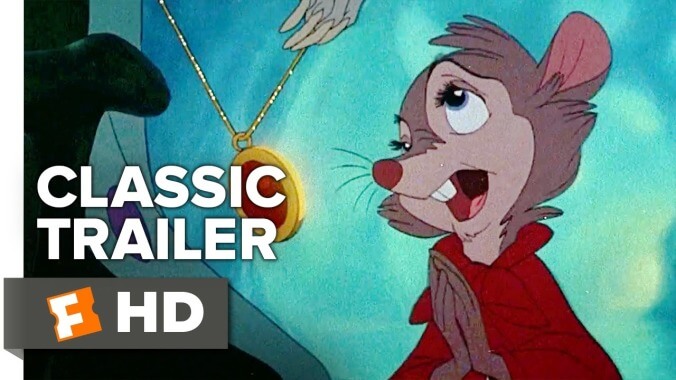
Does anyone who saw The Secret Of NIMH as a child not associate it with being creepy? Much like The Last Unicorn, another animated children’s film from 1982, the movie’s reputation has endured largely on the basis of scaring the shit out of impressionable young minds. In a random poll taken at my office, a good two-thirds of the people who remembered the film mostly remembered it for being scary. Not specific frights, mind you; rather, it’s just a distinct sense-memory created by NIMH, like the recollection of how Christmas Eve felt as a kid, or that Grandpa smelled like discomfort in scented form. If Back To The Future brings a warm smile to your face, NIMH probably causes you to involuntarily shudder.
But why? Like a lot of us, I saw The Secret Of NIMH when I was very young, on some VHS tape that had been rented for a birthday party, or possibly supplied to terrify me into submission on a night I had a babysitter. It left me with an overall impression of morbid unease, like there was something rotten in the movie trying to get out and infect me. But I couldn’t tell you any details of the plot, save that it involved rodents and magic. And I remembered very old rats, wearing robes, and something was very wrong with them. My childish brain instinctively cringed away from the movie on a visceral level, even though I also clearly remember being fascinated by it. That repelled-but-intrigued assessment has stuck with me in the intervening decades, though I haven’t seen so much as a frame of it since that early experience. “Hurts so good” might be a useful descriptor, did it not immediately conjure up unsavory and way-too-adult intimations of romantic ecstasy that I probably don’t want to associate with anthropomorphic cartoon rodents.
It seems I’m far from alone in this evaluation. Lists of terrifying moments from children’s entertainment include scenes from the film, and it regularly gets listed on inventories of scary kid’s movies. TV Tropes provides almost a dozen sequences from the movie as being examples of “nightmare fuel.” Entertainment Weekly simply said of The Secret Of NIMH, “Why is this so scary?” And sure, upon viewing it as an adult, there are elements that can arguably be identified as scary. There’s violence, and bloodshed, and even a big spider. But watching the movie now, more than 20 years later, it’s clear none of those things were really what scared me. No, the thing that got to me—and what came immediately rushing back as soon as I began watching—was the realization that I was freaked out by the eyes. Or lack of them, rather. And while that sounds creepy, it’s actually fairly innocuous, downright silly even, in execution, seen as an adult. But good god, it obviously does the trick for kids of a certain age.
The Secret Of NIMH was the first full-length feature film from soon-to-be-iconic ’80s animation producer Don Bluth, a former Disney animator who became disillusioned with the way the legendary studio was being run during the dispiriting back half of the ’70s, when the company was entering one of its more creatively fallow periods. He quit and formed his own company, Don Bluth Productions, taking with him 11 fellow Disney animators, with the intent of reviving the classical animation style of early Disney classics. NIMH was their first feature, and despite critical goodwill, the film had middling box office, which, coupled with a subsequent industry-wide animation strike, bankrupted the fledging company. Another company, the Bluth Group, was formed the following year, and completed several arcade games, including Dragon’s Lair, before it, too, went belly up.
The reason Bluth became a recognizable brand name in animation is thanks to Steven Spielberg. The Hollywood giant agreed to produce Bluth’s next two projects, An American Tail and The Land Before Time, both wildly popular animated films that went on to have a truly disturbing number of sequels (13 direct-to-video installments and a television series in the case of the latter movie alone). Bluth had a couple more hits—All Dogs Go To Heaven, in 1989, and Anastasia (for 20th Century Fox) in 1997—but his name as a marquee symbol implying quality was mostly finished by the end of the millennium. (To put it diplomatically, his ’90s output—Rock-A-Doodle, Thumbelina, A Troll In Central Park—mostly sucked.) The Secret Of NIMH will arguably stand as his finest achievement, and definitely the one the internet likes to reference the most, usually with a “Man, that’s a fucked-up movie, right?”
The Secret Of NIMH is actually a relatively straightforward narrative that becomes incredibly complex via the addition of weighty backstory revealed throughout the film. The actual course of events takes place over about 48 hours: Mrs. Brisby, a mouse who has just lost her husband, needs to move her family of four children out of the farmhouse field in which they reside, before the farmer destroys it (harvesting season has arrived again, and his plow will cut their home to ribbons). She goes to seek advice from a wise old owl, who tells her to contact the rats that live in the nearby rose bush, and they’ll help her move her home to the lee of the stone nearby, safe from the plow. She goes to them for help, they assist, the home is transported, roll credits.
But that description elides all the life-or-death drama, as well as the titular secret. The rats were actually part of a horrific science experiment conducted by the National Institute Of Mental Health, in which rodents were tortured. Eleven mice and 20 rats were injected with a serum that ended up giving them self-consciousness and human-like intelligence. Mrs. Brisby’s husband Jonathan, unbeknownst to his future wife, had been key in helping them all escape (the mice all died save two, sucked into the air vents of the facility), thereby earning the gratitude of the rats and explaining why so many of them are happy to help her out. During the film, it’s revealed that NIMH is planning to come and destroy the rose bush, possibly exposing or killing the rats in the process. (The people at NIMH seem very aware they accidentally unleashed a cadre of super-intelligent rats upon the world, a result that presumably would not be looked upon too kindly by, say, anyone who isn’t a mutant turtle looking to be trained in the ways of the ninja.)
There are several additional subplots that complicate this already involved premise. The first is simply that of Brisby’s sick youngest child Timothy, who has fallen ill with bad case of Introducing Stakes 101. It’s the reason she needs help—he’s unable to go outside without risking death, as we’re assured early on by the only other surviving mouse from NIMH, a bearded inventor type named Mr. Ages. Timothy’s got a common case of pneumonia, nothing that bed rest can’t fix—“But you can die from it!” Ages brightly reminds us, a happy thought indeed for all future kids who decide The Secret Of NIMH will be a great way to pass the time while they’re sick in bed with a cold.
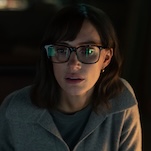



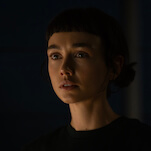

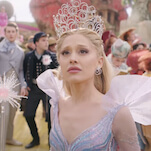
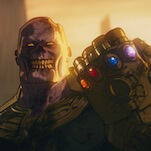

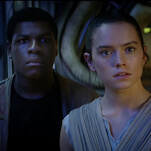
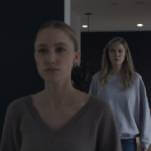


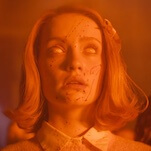

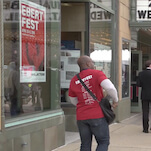
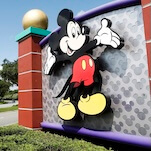

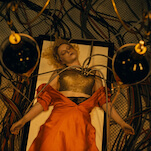


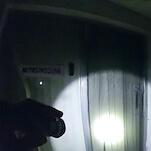



![Dua Lipa denies reports about firing agent for trying to deplatform Kneecap [UPDATE]](https://img.pastemagazine.com/wp-content/avuploads/2025/09/22135814/dua-lipa-royal-albert-hall-performance-screenshot-square.jpg)
